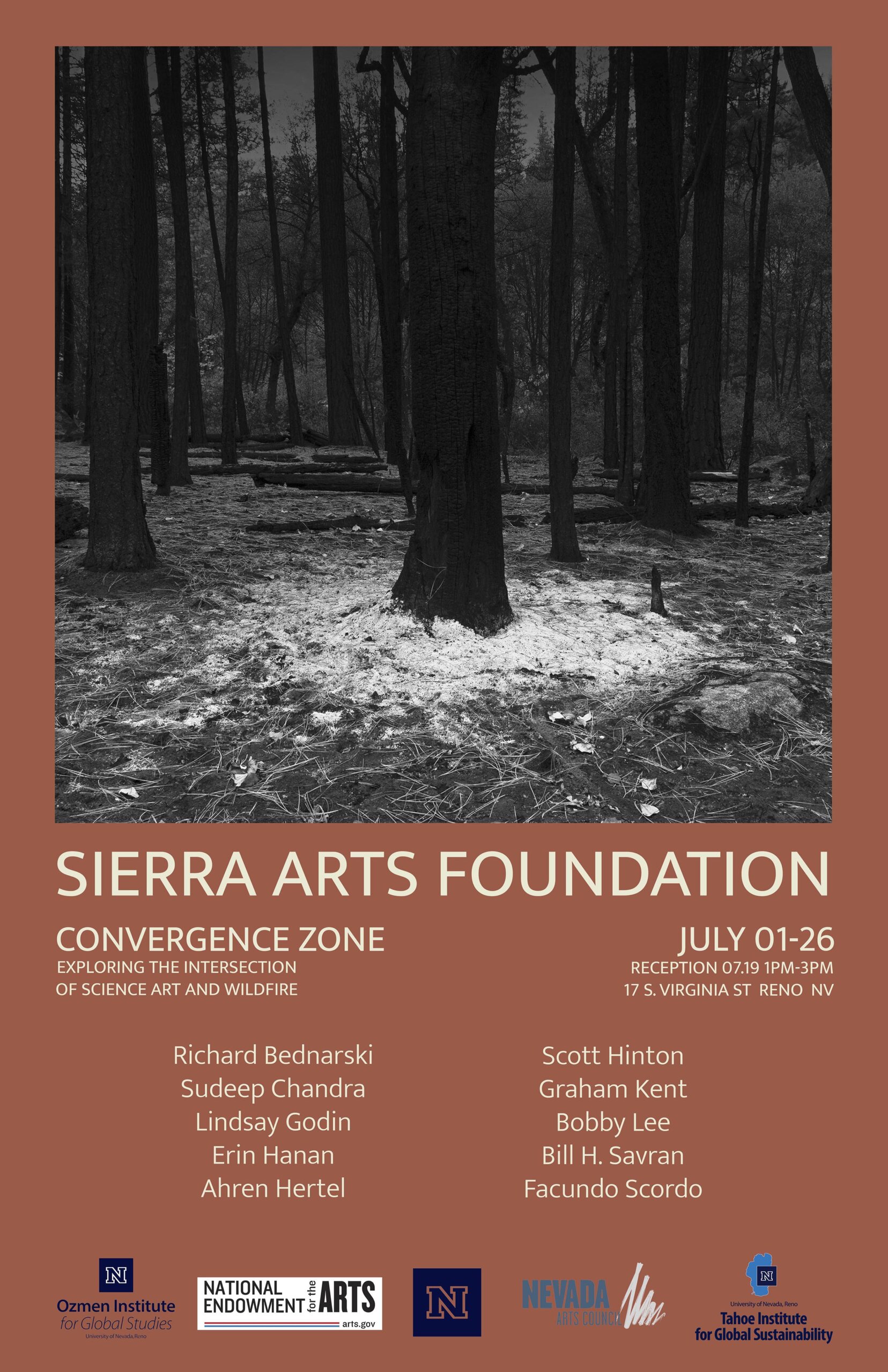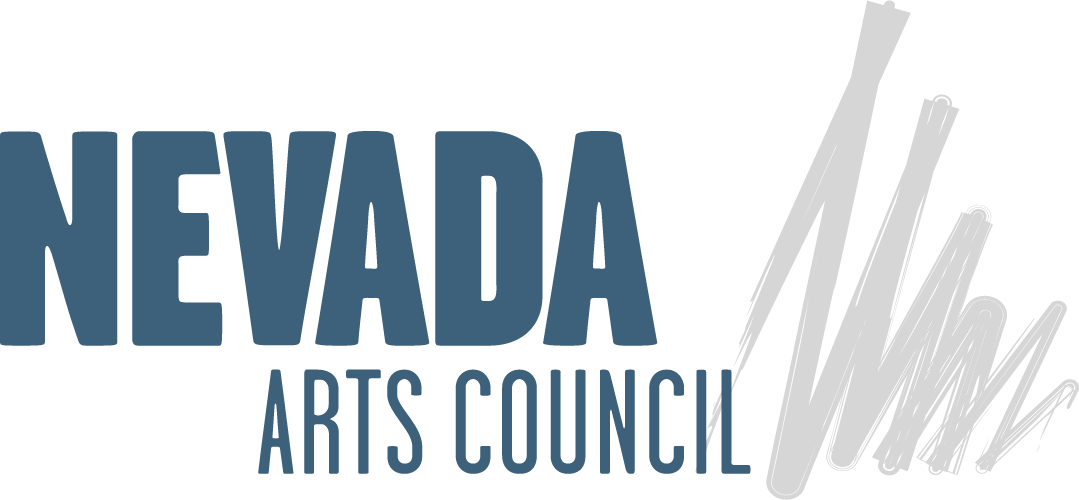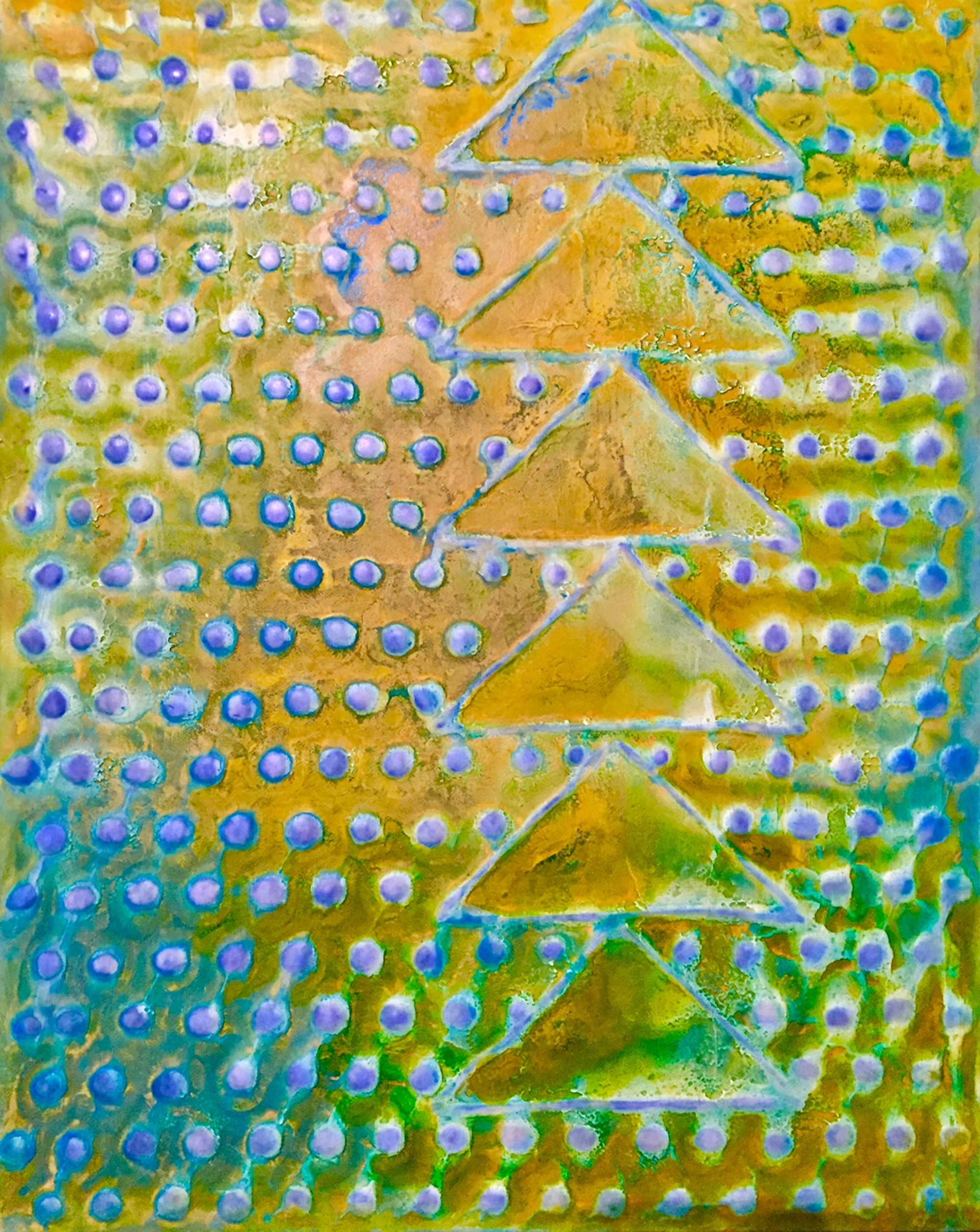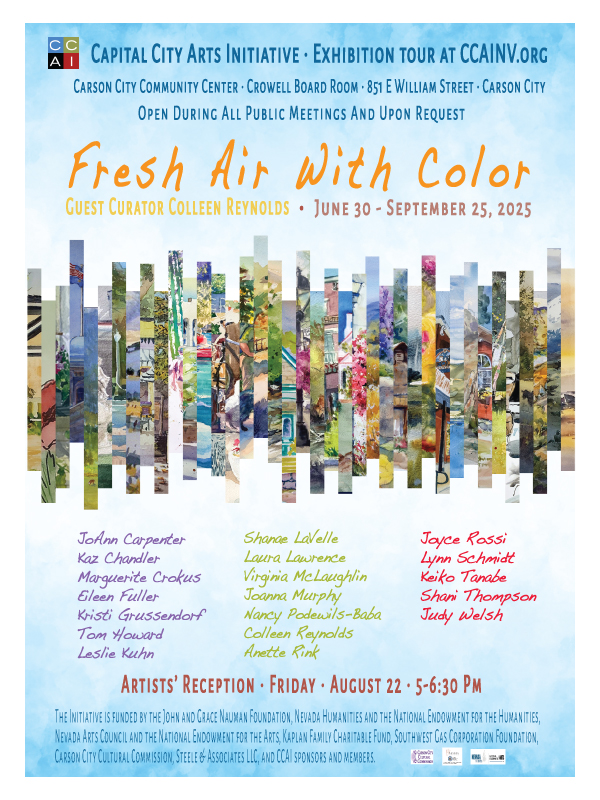Events

- This event has passed.
Convergence Zone
One event on July 19, 2025 at 1:00 pm
An event every week that begins at 10:00 am on Tuesday, Wednesday, Thursday and Friday, repeating until July 26, 2025
An event every week that begins at 12:00 pm on Saturday, repeating until July 26, 2025

Convergence Zone: Exploring the Intersection of Science, Art and Wildfire
Exhibition Dates: July 1 through July 26
Exhibition Reception: July 19 1-3 p.m.
As of June 23, 2025, more than 32,622 wildfires occurred in the United States since the start of the calendar year. On June 20, another wildfire ignited south of Reno. Strong winds grew the Conner fire to more than 17,000 acres by June 22. Wildfires are not uncommon in the United States, but the frequency and intensity should be alarming.
Convergence Zone is a collection of artists and scientists where the subject of fire, specifically forest/wildland fires connect aesthetics, research, concern and conservation. It is evident in the devastated landscapes of the West where forest and wildland fires have been fueled by a variety of factors and continue to result in large catastrophic disasters. As the human wild interface expands into a mosaic filled forest of combustible fuel and homes the conversation is a complex negotiation living with and adapting to the new paradigm of an extended fire season in the western United States and now across the country. Convergence Zone is an exhibition that brings together various creative and scientific perspectives to provide outreach and detailed imagery of our critically strained forests and wildland deserts.
The original Convergence Zone exhibition was hosted at the University of Nevada, Reno at Lake Tahoe was held in conjunction with Lake Tahoe Wildfire Summit. Scott Hinton organized the artists who have been working independently on wildfire projects. Sudeep Chandra have been a catalyst on campus and identified researchers who’s projects connected the sciences with the arts.
The exhibition is a mix photographs and 2D images to develop varying perspectives of our interaction with fire and the post fire landscapes. Convergence Zone includes fire science research, original photographs from multiple artists, most who have been working independently documenting active fires and post fire landscapes. One of the goals of this project is to increase the collaboration of creative and scientific researchers and to build awareness of the roll of fire globally in the landscape. the importance to develop new strategies for reducing the catastrophic fires.
- Lindsay Godin’s black and white photographs are a stark reality of charred earth a post-fire landscape.
- The choking smoke filled air is captured in the paintings of Ahren Hertel. An orange hue casts the landscape of the apocalyptic now.
- In the stillness of the desert afternoon, Bobby Lee’s timelapse of a range land fire in Beach Fire, 2020 quietly observes the movement of the fire and smoke plume. Fragments of cars dart across the bottom of the frame adding the element of those passing by, an homage to the New Topographic movement of photography, where art observes the human altered land.
- In comparison, Richard Bednarski’s photographs integrate a journalistic element of documentation, getting close to the landscape and people where fire is not just artistic interpretation but part living in the foothills of California. As wildfires continue to grow in size and intensity, the pyrocumulous clouds dominate the horizon and the sciences gain valuable insight into the workings of wildfire.
- Facundo Scordo and team use modeling to study the impact of smoke and ash around Lake Tahoe.
- Using the SheFire modeling framework, Erin J. Hanan and team work to research soil heating in wildfires and the transformative effects on soil biology. Hansen collaborates with Jiannign Ren and a bi-state team of university and government organizations to study the effects of bark beetles on the fire regimes of semiarid ecosystems.
- As the Conner Fire was fanned by intense summer winds the network of cameras of the AlertWildfire provide early warning to fire out break and highlight the work of Graham Kent and Bill H. Savran to build the network of steaming video. This network of cameras provides a vital tool beyond the outbreak of wildfire and can be used to plan for the deployment of resources in fighting wildfires.
The integration of art, photography to visualize elements of the wildfire science connects the complex data to a visceral response to the landscapes being studied. The dedication that each of the researchers brings to the study of wildfire and the growing need to expand collaboration in the new paradigm of ecological topics is essential to developing solutions to understand, conserve, restore and recover fire damaged landscapes.




